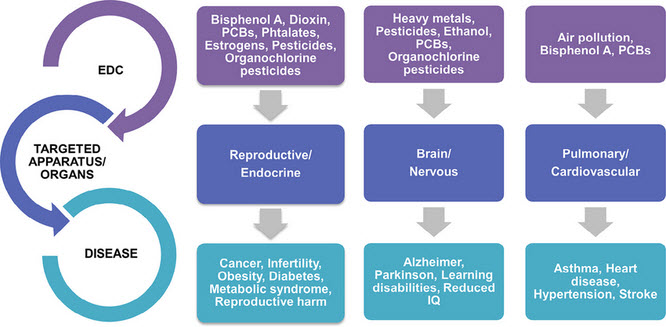Biodiversity, the variety of life on Earth, is essential for the health and stability of ecosystems. Environmental scientists play a crucial role in understanding and preserving biodiversity in the face of various environmental challenges. In this blog, we will explore the significant contributions of environmental scientists in preserving biodiversity, while addressing key topics such as renewable energy, urban sustainability, water resource management, climate change, and more.
Biodiversity and its Importance
Biodiversity encompasses the variety of species, ecosystems, and genetic diversity on Earth. It provides numerous benefits, including ecosystem services, such as clean air and water, soil fertility, and climate regulation. Environmental scientists recognize the intrinsic value of biodiversity and its critical role in maintaining ecological balance and supporting human well-being.
Understanding the Impacts of Climate Change on Biodiversity
Climate change poses a significant threat to global biodiversity. Environmental scientists study the impacts of climate change on species distribution, habitat loss, and ecosystem disruption. They use various tools, such as ecological modeling and field research, to understand the vulnerabilities of different species and ecosystems. By documenting these impacts, environmental scientists contribute to the development of effective strategies for biodiversity conservation and climate change adaptation.
Biodiversity and Urban Sustainability
Urban areas can have a profound impact on biodiversity, but environmental scientists work towards creating sustainable cities that promote biodiversity conservation. They advocate for green infrastructure, such as urban parks, green roofs, and wildlife corridors, to provide habitats for diverse species in urban environments. By integrating nature into cities and promoting sustainable land use practices, environmental scientists help create urban spaces that support biodiversity and enhance the quality of life for residents.
Preserving Biodiversity in Water Resource Management
Water resource management plays a crucial role in biodiversity conservation. Environmental scientists study the impacts of water extraction, pollution, and habitat alteration on aquatic ecosystems and the species they support. They work on developing innovative approaches to water resource management that prioritize the protection and restoration of freshwater habitats. By implementing strategies such as water conservation, pollution control, and habitat restoration, environmental scientists contribute to preserving biodiversity in and around water bodies.
Mitigating Threats to Biodiversity from Environmental Contaminants
Environmental contaminants, including endocrine-disrupting chemicals and other pollutants, pose a significant threat to biodiversity. Environmental scientists investigate the sources, distribution, and impacts of these contaminants on ecosystems and species. They develop strategies to minimize exposure and mitigate the negative effects of environmental contaminants on biodiversity. By advocating for pollution control measures and promoting sustainable practices, environmental scientists help safeguard biodiversity from the harmful effects of contaminants.
Promoting Biodiversity through Sustainable Land Use
Land use practices have a direct impact on biodiversity. Environmental scientists study the impacts of deforestation, habitat fragmentation, and unsustainable agricultural practices on biodiversity loss. They work towards promoting sustainable land use practices, such as reforestation, conservation agriculture, and protected area networks. By collaborating with stakeholders and policymakers, environmental scientists contribute to creating land management strategies that support biodiversity conservation and sustainable development.
Conclusion
Environmental scientists play a crucial role in preserving biodiversity by understanding its importance, studying the impacts of climate change and environmental challenges, and developing strategies for conservation. Their work spans various fields, from renewable energy and urban sustainability to water resource management and pollution control. By advocating for sustainable practices, promoting biodiversity-friendly policies, and collaborating with stakeholders, environmental scientists are instrumental in preserving the rich tapestry of life on Earth and ensuring a sustainable future for generations to come.






 That began our understanding of the devastating effects of DDT and the harm we as humans can inadvertently do to the environment and each other through the use of chemicals that were meant to make our lives better. I think that creed that you hear from the medical profession “First do no harm” might well be employed in the chemical industries. I think the world would be a different place if were enlightened enough to take that approach. There’s certainly a mind boggling number of chemicals that get approved with minimal testing, we won’t truly know their effect possibly for generations and even then it’ll be the effect of unknown chemical cocktails. As much as I appreciate the work of my fellow environmental scientists working in clean up operations there is a limit to what they can accomplish. I suppose all progress is slower than what we’d really like. I am glad for the increasing awareness that is resulting in more jobs in these fields, that is a good sign atleast.
That began our understanding of the devastating effects of DDT and the harm we as humans can inadvertently do to the environment and each other through the use of chemicals that were meant to make our lives better. I think that creed that you hear from the medical profession “First do no harm” might well be employed in the chemical industries. I think the world would be a different place if were enlightened enough to take that approach. There’s certainly a mind boggling number of chemicals that get approved with minimal testing, we won’t truly know their effect possibly for generations and even then it’ll be the effect of unknown chemical cocktails. As much as I appreciate the work of my fellow environmental scientists working in clean up operations there is a limit to what they can accomplish. I suppose all progress is slower than what we’d really like. I am glad for the increasing awareness that is resulting in more jobs in these fields, that is a good sign atleast. olution for managing the needs of the environment as well as human needs.
olution for managing the needs of the environment as well as human needs.